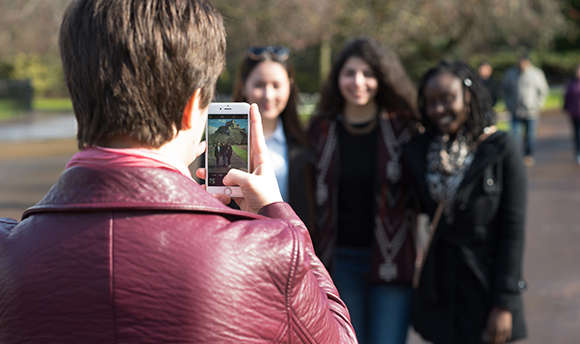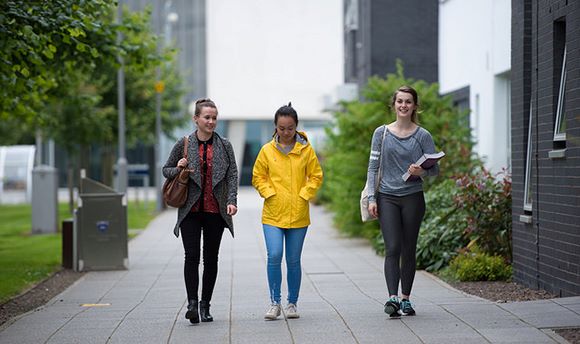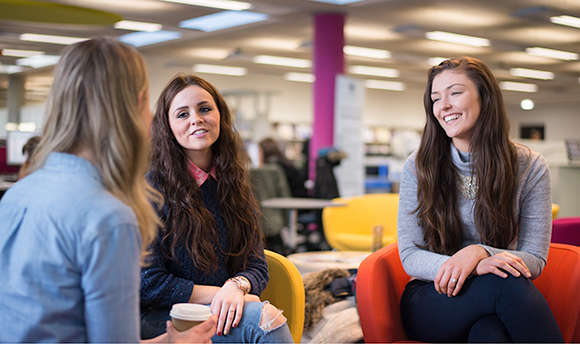School of Health Science - Occupational Therapy Learning Agreement Handbook
An overview of adult learning theory
Andragogy (adult learning) is a theory that holds a set of assumptions about how adults learn. Andragogy emphasises the value of the process of learning. It uses approaches to learning that are problem-based and collaborative rather than didactic, and also emphasises more equality between the teacher and learner.
Andragogy as a study of adult learning originated in Europe in the 1950's and was then pioneered as a theory and model of adult learning from the 1970's by Malcolm Knowles an American practitioner and theorist of adult education, who defined andragogy as the art and science of helping adults learn. Knowles proposed that there were significant differences in the ways in which children and adults learn which led him to advocate the use of a Model of Self-Directed Learning for adult learners. Knowles identified the six principles of adult learning outlined below.
- Adult learners are internally motivated
In traditional teaching external factors such as grades, competition are seen as very significant whereas adult learners acknowledge that their internal motivation may play a more significant role in learning
- Adults bring life experiences and knowledge to learning experiences
Adult learners have a variety of life experience which represents a very rich resource for learning. These experiences are however imbued with bias and presupposition.
- Adults are goal oriented
- Adults are relevancy oriented
Adult learners need to know why they need to learn something before learning to undertake it.
- Adults are practical
Adult learners adopt a problem-based approach to learning and place emphasis upon authentic, meaningful and relevant learning activities
- Adult learners like to be respected
Adult learners need to be responsible for their own decisions and to be treated as capable of self direction.
Self-directed learning and practice placements
The Model of Self Directed Learning has important implications for your practice placements. When this model is applied, the practice educator relinquishes a great deal of authority and adopts the role of a facilitator of your learning, thus the process of learning is owned by you. This is in direct contrast to a more traditional approach where the practice educator is viewed as the expert and their role is synonymous with a transmission or apprenticeship model of instruction.
There is a place for both educator-led and student-led approaches in practice- based learning or perhaps more appropriately for an approach which has balance between the two. For example, learners may be more comfortable with the principles of self- directed learning in the latter stages of their studies. Moreover, since self-directed learning usually involves negotiation and collaboration with another person, it may never be a completely autonomous process.
As you progress through each of your practice placements, the expectation is you will become increasingly involved in shaping the direction and nature of your own learning using available resources. Practice educators will adapt their approaches taking into account not only the stage you have reached in the occupational therapy programme, but also your personal learning needs.
Key factors essential to the successful implementation of the Model of Self-Directed Learning are:
- Establishing a climate that is conducive to learning
- Involvement of the learner in all stages of the learning process. The use of a learning agreement is one way of achieving this participation and collaboration.
What is a learning agreement?
A learning agreement enables you to assume responsibility for your learning and show how you can demonstrate you have met the required competency for each learning outcome or goal. The use of a learning agreement is an integral tool for ensuring your learning is focussed, explicit and links theory to practice. The learning agreement may form a key element to inform the assessment of your competence and must therefore link to the specific placement learning outcomes.
What are the stages involved in preparing and completing a learning agreement?
1. Establish your relevant learning needs
Consider where am I now? What is the focus of the practice placement? What prior experience / learning do I have that relates to this placement? What would I like to learn and achieve in the time available?
What does my practice educator think I must learn?
Having considered these questions, you should now be able to identify goals for your learning agreement.
2. Refine your needs into specific goals
This stage of the learning agreement will clarify the steps required to ensure that you will achieve your aim.
3. Identify useful resources and strategies for learning
Consider what to look for and where to look for it
Consider whom to talk to and the most appropriate means of approaching them The location and acquisition of relevant materials should also be explored
The sequence in which the stages will be carried out should also be decided.
4. Determine what will be produced
Consider what is to be produced/demonstrated as evidence that specific goals have been achieved
Decide on what has to be assessed
5. Determine the criteria for assessment
At this point you need to consider the “who, what, where and hows” of assessment. How would you like your performance to be validated and by whom –for example your practice educator, other members of the team, service users, would self assessment be an option?
Decide upon the criteria that will be used to assess the standard of your performance. For example, criteria used to assess a “knowledge-based” goal on the underpinning philosophies of person centred practice, would probably focus upon the accuracy and comprehensiveness of your work.
For a “skill-based” goal, related to the safe moving and handling of people you could develop criteria to assess your professional approach, confidence and safety in demonstrating the skill.
Assessment methods may include discussion and feedback; written work and feedback; observation of your performance and feedback; demonstration and feedback; self-appraisal and evaluation of your performance; oral and/or written presentation of work, or combinations of the above – the choice is yours!
6. Review your learning agreement with your practice educator
This is a rigorous process and requires the active participation of both you and your practice educator.
Once you are both satisfied with and have agreed its contents, you should each date and sign the learning agreement form.
7. Carry out the agreement
You should then proceed to achieve the aims defined in your agreement.
Should the process of achieving the aims be changed / affected in any way you may re-negotiate the relevant aspects with your practice educator. The agreement is not a rigid document; rather it should be viewed, as a flexible framework for learning which can be re-negotiated when and as necessary.
8. Self assess your learning and submit the completed work
You should demonstrate that you are able to evaluate the learning process and its end product.
Ongoing and final assessment should be collaborative between yourself and your practice educator focussing on both the process of learning and the outcomes of it. This stage of the process may be enhanced by using your reflective diary.
What are the advantages and benefits of using learning agreements?
Using learning agreements enable you to further develop and refine your repertoire of transferrable skills and attributes.
Planning
-
-
self-appraisal (knowledge, skills, experience, aspirations)
-
context awareness (knowledge and skills needed)
-
target setting and time management
-
decision making
- problem formulation
-
- Negotiating
-
-
communication (verbal and written)
-
awareness of others’ needs
-
justification of relevance
-
clarity of purpose
-
resource awareness
-
competence in formal procedures
-
-
Implementing
-
self-organisation
-
monitoring skills
-
adaptation to experience
-
application of knowledge
-
working for a purpose
- working with others
-
-
Demonstrating
-
-
presentation
-
communication
-
evaluation of performance
-
dialogue with experts
- self and peer assessment.
-
Reflecting
-
conceptual development
-
understanding - knowledge, self and external context
-
problem re-formulation
-
awareness of personal/professional needs requiring further development
Your role and responsibilities in negotiating the learning agreement
-
Prior to each practice placement, you should familiarise yourself with the University learning outcomes for the placement and start to consider these might be achieved .
-
Clear understanding of prior theory and practice.
-
Understanding of the practice area.
-
Commitment to the negotiation process.
-
Awareness of your strengths and limitations relating to skills, knowledge and attitudes.
-
Realistic awareness of your own and others learning styles and preferences.
-
Devising clear goals that have measurable expectations for the placement.
-
Realistic estimate of what might be achieved in the time available.
-
Displaying willingness to continually re-evaluate your performance.
-
Flexibility and adaptability in meeting goals
-
Ability to justify relevance.
- Considering criteria for good performance.
The practice educator’s role and responsibilities in relation to learning agreements
Your practice educator plays a key role in the creation of a positive, challenging learning environment in order to enable you to develop both professional competences and professional identity. This entails:
-
Providing you with an orientation to the practice placement, area of work and range of potential opportunities for learning
-
Engaging in discussions to help you analyse your learning needs, identifying what you would like to learn more about and considering whether opportunities may be available during your placement
-
Collaborating with you to devise personal and goals that are both realistic and relevant to the practice placement
-
Acting as a facilitator and resource to enable you to achieve the goals of your learning agreement
-
Incorporating your personal goals into the overall framework for learning during your placement
-
Assisting you to evaluate your success in the process of achieving the goals in your learning agreement
-
Helping you to self -evaluate the achievement of learning outcomes
-
Providing you with ongoing feedback on your ability to negotiate, define and undertake goals, and evaluate outcomes
When should the learning agreement be developed?
You should begin to discuss your learning needs early in the placement, normally within 48 hours of starting your placement and have developed your learning agreement by week 2 of practice placement.
Amendments can be made at any time to your learning agreement if there are changes in the opportunities available, lack of initially anticipated resources etc. If at any point during your placement, either you and/or your practice educator have any queries relating to aspects of the learning agreement then please contact your personal academic tutor.
Prior to each practice placement, you should collect hard a hard copy of the learning agreement pro-forma from the Academic Administration. An electronic template is also available for downloading directly from Black Board
Toward the end of your placement, you will be required to consider which of your personal aims were achieved and those, which were not attainable. You will be expected to identify and reflect upon the factors that either enhanced or facilitated the process and discuss this with your practice educator before the completion of the final assessment report. Your learning agreement should then be retained in your professional and personal development portfolio for future reference.
The learning agreement form comprises four sections:
Aims
These should be fairly global and should identify the major themes that you would like to concentrate upon during your practice placement.
For example one of the University learning outcomes for practice placement 1 is:
- With guidance, accurately identify risk factors and work with service users in a safe and appropriate manner.
Your first placement is located in an acute medical ward. Following discussions with your practice educator you agree that your aim will be:
- With guidance, to handle service users safely and appropriately within the specific practice setting.
Goals
These should be more specific and clearly identify specific knowledge, behaviours and/ or skills that will be developed, for example:
- Carry out transfers (chair, bath and toilet) safely and appropriately with selected service users by the end of the six week placement.
Process and resources
In this section of the agreement, you should describe how you plan to go about achieving your goals. This includes time required from other people, individual work you will undertake, library resources, opportunities for client contact and so on. The more specific you are in describing strategies and learning resources, the more helpful your practice educator can be in facilitating the learning process.
For example, to achieve your goal “carry out transfers (chair, bath and toilet) safely and appropriately with selected service users by the end of the six week placement” you could put forward the following ideas:
-
Practice educator to help me identify service users (and others) who might assist me with my learning and obtain their informed consent.
-
Observation of my practice educator and other therapists in the department doing transfer practices with patients/clients
-
Practising transfers with other students in the department
-
Attend tutorials on moving and handling and safe use of bathing/toileting equipment
-
Review my university notes on principles of moving & handling and risk assessment; communication skills
-
Find out about service’s policies and procedures on risk assessment specifically for manual handling
-
Practice transfers with service users under maximum supervision
Proposal for assessment
In this section of the agreement you should specify how each of your learning goals will be assessed. Ensure that your criteria and methods for assessment are aligned with and appropriate for the particular goal.
Further Reading
ANDERSON, G., BOUD, D. & SAMPSON, S. 1996. Learning contracts: a practical guide London: Kogan Page.
BOSSERS, A., BEZINNA, M.B.,HOBSON, S. KINESELLA, A., MACPHAIL, A., SCHURR, S. , MOOSA, T ., ROLLEMAN, L., FERGUSON, K., DELUCA, S., MACNAB, J. & JENKINS, J. 2007. Module 2: Developing (really useful) objectives Preceptor Education Program (PEP) for Health Care Professionals and Students. [online]. [viewed 15 July 2014] Available from: Health Care Professionals and Students.
HEALEY. M & SPENCER J. 2008. Surviving your placement in health and social care. Maidenhead: Open University Press McGraw Hill.
KENNEDY–JONES, M. 2005. Contract Learning. In: Rose, M.L. ed. Transforming practice through clinical education, professional supervision and mentoring. Edinburgh: Churchill Livingstone, pp. 249-257.
KNOWLES, M. HOLTON, E.F. & SWANSON, R.A. 2011. The adult learner: the definitive classic in adult education and human resource development. 7th ed. Amsterdam: Elsevier.
MATHESON, R. 2003. Promoting the integration of theory and practice by the use of a learning contract. International Journal of Therapy and Rehabilitation, 10 (6): pp. 264-269
MCALLISTER, M. 1995. Learning contracts: an Australian experience. Nurse Education Today, 16 pp. 199-205.
WHITCOMBE, S.W. 2001. Using learning contracts in fieldwork education: the views of occupational therapy students and those responsible for their supervision. British Journal of Occupational Therapy, 64 (11): pp. 552-557.



